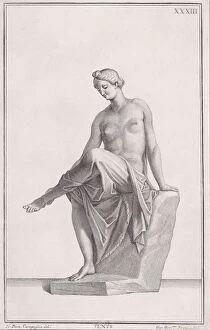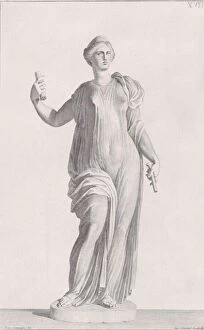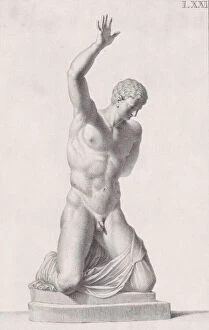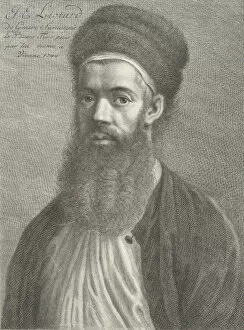Domenico Campiglia Collection
Domenico Campiglia, an Italian artist of the 18th century, left behind a remarkable legacy through his various works
All Professionally Made to Order for Quick Shipping
Domenico Campiglia, an Italian artist of the 18th century, left behind a remarkable legacy through his various works. One can witness his talent and skill in sculptures such as the Statue of Hercules, created by Marc Antonio Corsi in 1734. Another masterpiece is the Statue of Apollo, crafted by Giovanni Battista Jacoboni during the same year. These statues showcase Campiglia's ability to capture strength and beauty in stone. Campiglia's collaboration with other renowned artists resulted in breathtaking pieces like the Statue of Venus, sculpted by Giovanni Girolamo Frezza also in 1734. The elegance and grace portrayed in this artwork demonstrate Campiglia's versatility as an artist. In addition to sculpture, Campiglia contributed to "Museum Florentinum, " a collection that includes Diana (Plate XIX), Leda and the Swan (Plate IIII), A Muse (Plate XVII), Male Athlete (Plate LXXV), Mercury (Plate XXXVIII), Narcissus (Plate LXXI), Mars (Plate XXXVII). Through these plates, he showcased his expertise not only in capturing human form but also mythological figures with great attention to detail. Furthermore, Campiglia revealed another facet of his creativity through a self-portrait painted by Carlo Gregori. In this Turkish Outfit self-portrait from the 18th century, we see him embracing different cultures while showcasing his own identity as an artist. One cannot overlook one of Campiglia's most celebrated works titled "She gathers the fairest flower" or "Il piubel fior ne coglie. " This painting encapsulates beauty and femininity through its delicate depiction of a woman collecting flowers. It exemplifies Campiglia's ability to evoke emotion through art, undoubtedly a gifted artist who left an indelible mark on Italian art history. His collaborations with other talented individuals brought forth timeless sculptures and paintings that continue to captivate audiences even today.












